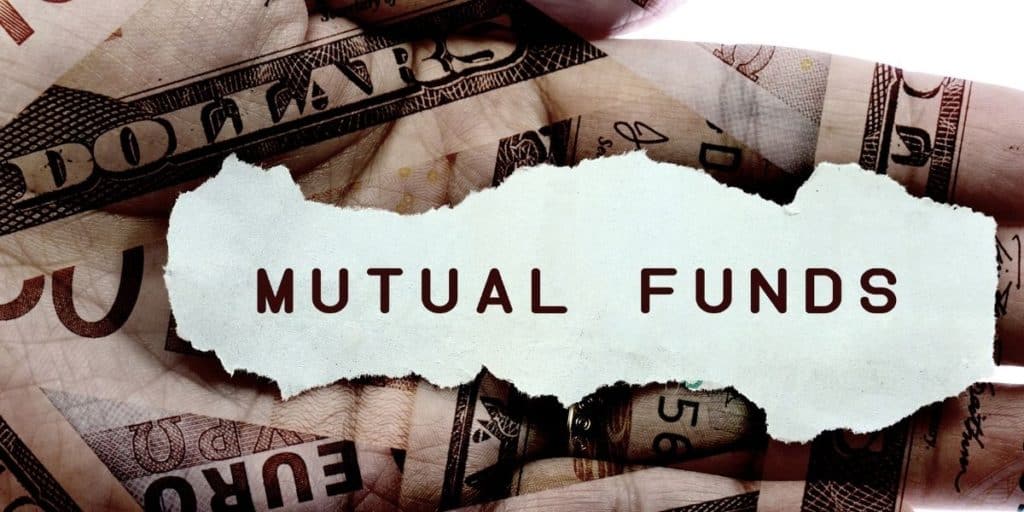When the end of the year approaches, mutual fund investors grow expectant because they know that they might be pocketing dividend income, whether in the form of capital gains or ordinary income. But while most investors know this, not everyone knows why distributions are made at the end of the year. After all, some mutual funds’ fiscal years don’t coincide with the calendar year.
Mutual funds have year-end distributions to avoid fund-level taxation. This means that year-end distributions help funds maintain their status as Regulated Investment Companies (RICs), a class of investment companies exempted from corporate-level income taxation.
Read on for an eye-opening discussion as I explore:
- What it means to be a RIC.
- Why mutual funds strive to maintain that status by making year-end distributions.
- Other RIC eligibility criteria besides the timing of distributions.
- The specific parts of the Income Revenue Code governing the timing of mutual fund distributions.
IMPORTANT SIDENOTE: I surveyed 1500+ traders to understand how social trading impacted their trading outcomes. The results shocked my belief system! Read my latest article: ‘Exploring Social Trading: Community, Profit, and Collaboration’ for my in-depth findings through the data collected from this survey!
Table of Contents
A Primer on Mutual Fund Distributions
There are two reasons why mutual funds pay distributions at the end of each calendar year.
Mutual funds are classified by company type for regulatory purposes. Why is this important? Because the reason mutual funds pay out distributions at the end of the year is closely related to regulatory requirements.

Mutual funds fall under a broad category of companies known as Regulated Investment Companies (RICs).
That category also includes other types of investment entities such as Exchange Traded Funds (ETFs), Unit Investment Trusts (UITs), and Real Estate Investment Trusts (REITs).
An entity must meet some requirements to be classified as a RIC. While there are several requirements, I’m only going to mention the ones that are most relevant to this discussion.
These are as follows:
- At least 90% of the entity’s income must be derived from interest, dividends, or capital gains earned on investments.
- At least 50% of the entity’s total assets must take the form of securities, cash, or cash equivalents.
- To avoid being taxed like any other corporation, the entity must payout at least 90% of its taxable income to its shareholders.
Mutual funds generally meet all the above requirements, and as such, the rules for when they must pay out distributions are the same as those of any other RIC.
The other reason that mutual funds have year-end distributions is that there are capital gains distributions, which are the types of distributions that a mutual fund is required to pay in December every year.
However, ordinary income distributions can be paid out annually, monthly, or quarterly, depending on the fund’s distribution policy. There isn’t a legal requirement for mutual funds to pay out these types of distributions at a certain time of the year. The only stipulation is that they pay these at least once a year.
Now that you’re up to speed, let’s find out why mutual funds and other RICs are required to pay out distributions at the end of the calendar year instead of a fiscal year.
Why Mutual Funds Have Year-End Distributions?
The main reason mutual funds have year-end distributions is to avoid taxes. Paying out capital gains contributions at the end of each calendar year is part of mutual funds’ compliance measures to qualify to be treated as RICs for tax purposes.
Now, you might be wondering, why do mutual funds strive to be eligible RICs? Are there tax benefits of being classified as such? As it turns out, yes, because being classified as a RIC comes with a tax benefit for mutual funds.
Typically, the earnings of a RIC aren’t taxed.
The IRS allows all RICs to pass over income tax burdens to their investors, who then pay taxes on their earnings. This tax provision is based on the conduit theory, which states that any investment company that passes over all of its earnings (dividends, capital gains, and interest) to its investors should be exempt from corporate-level taxation.
Without this tax exemption, RICs and their investors would be subjected to double taxation, which means that the company’s earnings would be taxed at the corporate level and then at an individual level when investors pay income taxes.
To comply with the RIC eligibility criteria and avoid corporate-level taxation, mutual funds must pay out more than 90% of their taxable income to investors and ensure that all the capital gains distributions are made at year-end.
To clarify the latter part of this statement, let’s look at the specific sections of tax laws governing it:
- Internal Revenue Code (IRC) Section 855
- Internal Revenue Code (IRC) Section 4982.
The Internal Revenue Code (IRC) Section 855
Traditionally, the IRC Section 855 allowed RICs to payout distributions up to a year after their tax year had ended and then claim a tax deduction for the tax year in question. Some distributions would be paid out after year-end because a company’s tax year doesn’t always match a calendar year.
Also known as spillback dividends, distributions paid after year-end would cause a mismatch between when a RIC earns them and when shareholders pay tax on that income. That’s because investors typically recognize income from distributions when that money is paid out to them instead of when the RIC earned it.
To illustrate how this potential mismatch between when income is earned and when a RIC pays it out, here’s an example:
Let’s say that a mutual fund whose fiscal year ends on March 31 earns a $200 dividend on May 20, 2015.
Assuming the fund doesn’t have any other income and expenses at the end of March 31, 2016, it’s allowed to pay out the $200 earned in May 2015 as late as the end of March 2017 and then claim a deduction for that dividend when filling its March 31, 2016 tax return.
For the investors, this dividend will appear on their 2017 tax returns, even though it was actually earned in 2015. As far as the IRS is concerned, this kind of mismatch can potentially defer income, which is what the 1986 congress sought to address with the IRC Section 4982.
Internal Revenue Code (IRC) Section 4982
The IRC Section 4982 was enacted in 1986 to address some of the loopholes of Section 855. Essentially, it stipulates that RICs must pay out capital gains distributions in the same calendar year they earn the income giving rise to those distributions.
Section 4982 also establishes October 31 as the cutoff date for tax purposes because capital gains items are often challenging to estimate.
Certain transactions that carry similar uncertainty but give rise to ordinary income may also use this cutoff date. These transactions include any gains or losses realized from the sale, disposition, or exchange of various assets, including currencies.
Failure to use the October deadline would force a mutual fund and any other RIC to put distributions on hold until the last day of December. If a mutual fund fails to pay out the required distributions per section 4982, a 4% excise tax will be levied on the under-distribution earnings.
So when I mentioned earlier that regulations require mutual funds to have year-end distributions, the IRC section 4982 is precisely what I was referring to.

Author’s Recommendations: Top Trading and Investment Resources To Consider
Before concluding this article, I wanted to share few trading and investment resources that I have vetted, with the help of 50+ consistently profitable traders, for you. I am confident that you will greatly benefit in your trading journey by considering one or more of these resources.
- Roadmap to Becoming a Consistently Profitable Trader: I surveyed 5000+ traders (and interviewed 50+ profitable traders) to create the best possible step by step trading guide for you. Read my article: ‘7 Proven Steps To Profitable Trading’ to learn about my findings from surveying 5000+ traders, and to learn how these learnings can be leveraged to your advantage.
- Best Broker For Trading Success: I reviewed 15+ brokers and discussed my findings with 50+ consistently profitable traders. Post all that assessment, the best all round broker that our collective minds picked was M1 Finance. If you are looking to open a brokerage account, choose M1 Finance. You just cannot go wrong with it! Click Here To Sign Up for M1 Finance Today!
- Best Trading Courses You Can Take For Free (or at extremely low cost): I reviewed 30+ trading courses to recommend you the best resource, and found Trading Strategies in Emerging Markets Specialization on Coursera to beat every other course on the market. Plus, if you complete this course within 7 days, it will cost you nothing and will be absolutely free! Click Here To Sign Up Today! (If you don’t find this course valuable, you can cancel anytime within the 7 days trial period and pay nothing.)
- Best Passive Investment Platform For Exponential (Potentially) Returns: By enabling passive investments into a Bitcoin ETF, Acorns gives you the best opportunity to make exponential returns on your passive investments. Plus, Acorns is currently offering a $15 bonus for simply singing up to their platform – so that is one opportunity you don’t want to miss! (assuming you are interested in this platform). Click Here To Get $15 Bonus By Signing Up For Acorns Today! (It will take you less than 5 mins to sign up, and it is totally worth it.)
Conclusion
Mutual funds have year-end distributions to remain compliant with the eligibility criteria of RICs, which helps them avoid fund-level taxation. These criteria are established by two IRC codes, namely, the IRC Section 855 and the IRC Section 4982.
Among other provisions, these two sections require all RICS (mutual funds included) to payout distributions at the end of the calendar year and not the fiscal year.
BEFORE YOU GO: Don’t forget to check out my latest article – ‘Exploring Social Trading: Community, Profit, and Collaboration’. I surveyed 1500+ traders to identify the impact social trading can have on your trading performance, and shared all my findings in this article. No matter where you are in your trading journey today, I am confident that you will find this article helpful!
Affiliate Disclosure: We participate in several affiliate programs and may be compensated if you make a purchase using our referral link, at no additional cost to you. You can, however, trust the integrity of our recommendation. Affiliate programs exist even for products that we are not recommending. We only choose to recommend you the products that we actually believe in.
